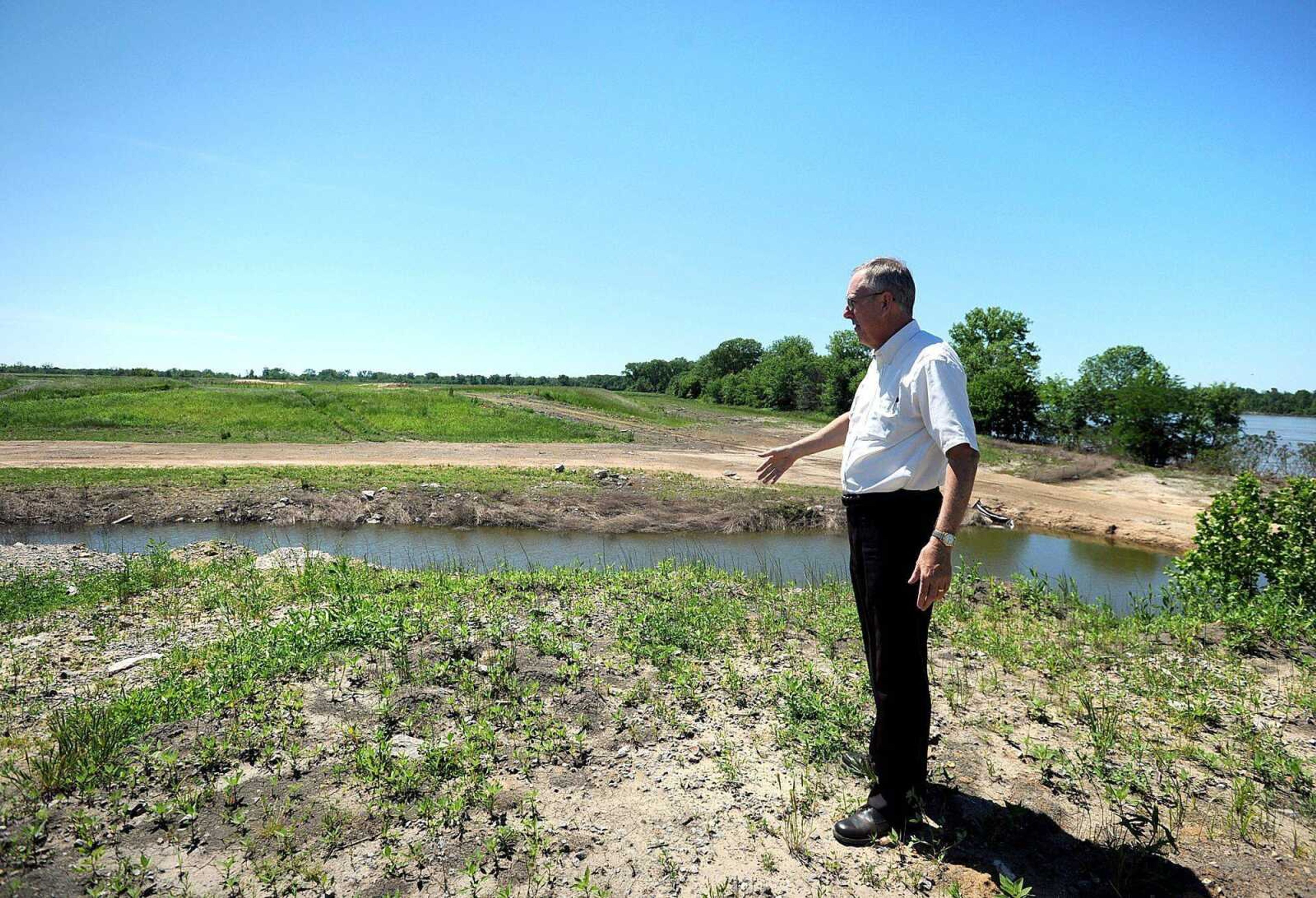Port authority to expand infrastructure, protect wetlands
The Southeast Missouri Regional Port Authority is planning to expand its infrastructure and, working with the Missouri Department of Conservation, to make sure its growth doesn't hurt surrounding wetlands, which contain the rare spring cavefish. Dan Overbey, executive director of the Southeast Missouri Regional Port Authority, said bids are being accepted until 11 a.m. ...
The Southeast Missouri Regional Port Authority is planning to expand its infrastructure and, working with the Missouri Department of Conservation, to make sure its growth doesn't hurt surrounding wetlands, which contain the rare spring cavefish.
Dan Overbey, executive director of the Southeast Missouri Regional Port Authority, said bids are being accepted until 11 a.m. June 6 on a project to construct a road extension and ditch crossing at the port. The existing gravel River Road, which can be crossed only when water is low, will be built up with about 25 feet of dirt, he said. Two eight-foot-diameter pipes will be installed under the road to allow the Mississippi River to maintain its connection to wetlands west of the port, which contain diverse populations of fish, birds and other wildlife.
"We want to make sure we don't, in any way, disconnect them from the river," Overbey said. Conservation considerations increased costs by about a third, he said. Though the cost to protect the wetlands may seem high on this relatively small project, the pipes will service areas that will be developed in the future, as well, he said.
"We think it's a pretty crucial element," Overbey said.
The wetlands are thought to be the only place in Missouri where the spring cavefish dwells. The tiny fish was discovered in the 1970s by biologist Eugene F. McDonald of Cape Girardeau, and is protected by the state as endangered, because of its scarcity. It is unique among cavefish for having eyes and averages 2 to 2 1/2 inches in length in adulthood. During the spring, the fish is present on the surface. Later in the summer, it retreats into a subterranean habitat, said Department of Conservation natural history biologist Bob Gillespie.
The wetlands the fish inhabits near the port are a remnant of Cape LaCroix Creek, which used to run through Cape Girardeau until the Diversion Channel was built, Gillespie said. Now the 25-acre area is "button brush shrub swamp" and flood plain swamp, he said.
The port has been working with conservation officials during the last five years to ensure plans for the road do not interfere with the environment, Gillespie said.
"We've got a great relationship with the SEMO port authority," Gillespie said. "It's a neat situation, because it's been conservation working with industry."
Overbey said the finished project will put the port in a better position to attract industry.
"You have to get infrastructure basics in place," Overbey said. "When a company gets ready to go, they want to move quickly."
Three-quarters of the funding for the project, about $219,000, will be paid for with federal funds from the U.S. Delta Regional Authority. The balance, about $73,000, will come from the port's coffers.
Two to three different users could use the 25- to 30-acre area in the future, Overbey said. The next thing he'd like to see for the area is expanded rail access.
Despite extreme low water levels earlier this year that caused restricted barge traffic and financial losses to the industry, followed by a rapid rise in the river, Overbey said the port has not sustained damage, and conditions are "relatively normal, as spring levels go."
Looking toward the summer, he said officials are watching for the possibility of low water, but, for the most part, people are breathing a sigh of relief and enjoying "what passes for normal on the river."
Documents relevant to the road project for potential bidders may be reviewed at the office of Cary Harbison, Bowen Engineering and Surveying, 2121 Megan Drive, Cape Girardeau. Call 339-5900 for information.
salderman@semissourian.com
388-3646
Pertinent address:
2302 County Park Drive, Cape Girardeau, Mo.
2121 Megan Drive, Cape Girardeau, Mo.
10 Bill Bess Drive, Scott City, Mo.
Connect with the Southeast Missourian Newsroom:
For corrections to this story or other insights for the editor, click here. To submit a letter to the editor, click here. To learn about the Southeast Missourian’s AI Policy, click here.











